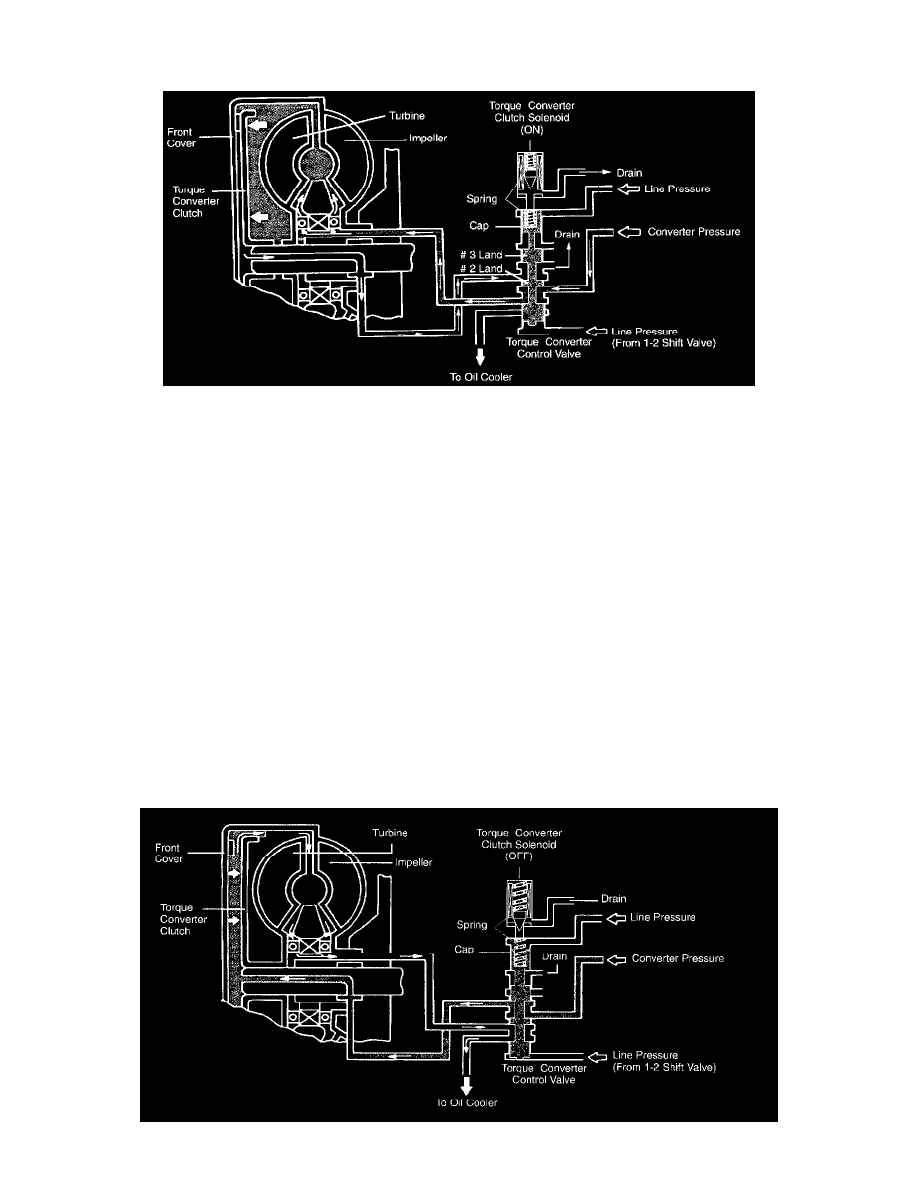Sportage 4WD 2Dr L4-2.0L (2002)

Torque Converter Clutch: Description and Operation
Torque Converter Clutch
The torque converter clutch connects the engine output directly to the overdrive input shaft of the transmission. Certain conditions must be satisfied
before the torque converter clutch will operate. First, a predetermined minimum speed (43 mph) must be reached and maintained. To prevent lugging
of the engine at lower speeds, or when the vehicle is coming to a stop, lock-up is restricted to the cruising speed range only. Second, to ensure that the
engine is operating efficiently, the engine coolant temperature must be at least 122°F.
The torque converter clutch will automatically disengage when one or both of the following occur:
a. Vehicle speed falls below Overdrive (O/D) engagement speed (43 mph).
b. Engine temperature falls below 122°F.
Hydraulic Operation - Torque converter clutch ON (Engaged)
When the transmission is in 2nd, 3rd, or 4th (O/D) gear, an ON signal from the TCM (Transmission Control Module) turns the torque converter clutch
solenoid ON. This opens a drain passage and reduces line pressure on the spring end of the torque converter control valve. Line pressure at the
opposite end of the control valve then forces the valve upward and seats it. This allows converter pressure to be routed through the turbine to the back
of the torque converter clutch (see diagram). The re-routed converter pressure acts upon the rear of the clutch, forcing it against the front cover. Fluid
from the front of the clutch drains through the torque converter control valve to the pan. Transmission fluid flow to the oil cooler is reduced with the
torque converter clutch engaged.
Mechanical Operation - Torque converter clutch ON (Engaged)
Transmission fluid pressure on the back of the torque converter clutch forces it to mechanically "lock" to the front cover. The front cover, clutch and
turbine all rotate as one unit, since the clutch is splined to the turbine. This provides a direct drive path from the engine crankshaft to the overdrive
input shaft of the transmission. Damper springs on the torque converter clutch reduce the amount of drivetrain noise and vibration in the passenger
compartment.
Hydraulic Operation - Torque converter clutch OFF (Disengaged)
